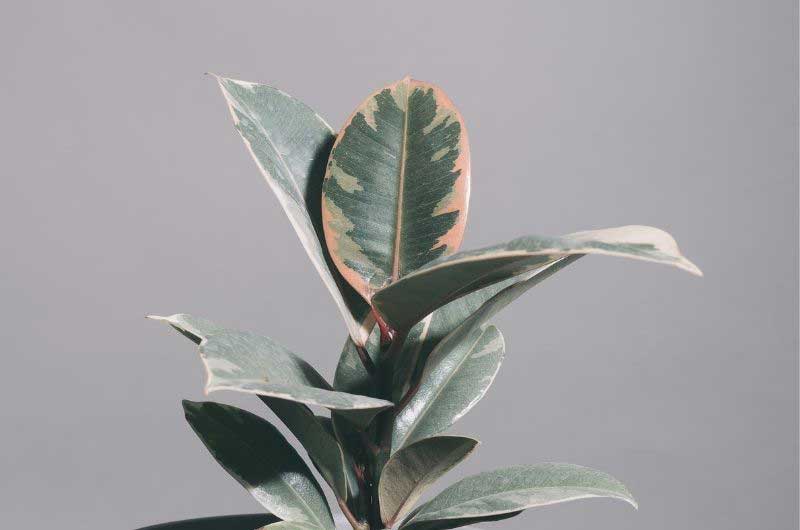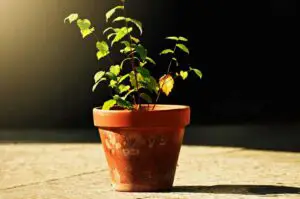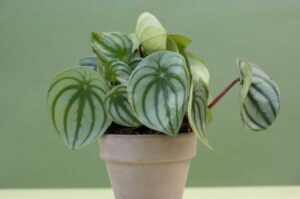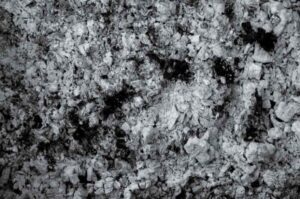13 Causes Of Rubber Plant Leaves Drooping (With Solutions)
Rubber plants are the most common indoor plants we all love to grow. They are easy to take care of and can dwell in extreme conditions. However, sometimes we struggle to keep them thriving. All we notice is the drooping and yellow leaves.
If you also have a droopy Rubber plant, don’t worry we got you covered. Let’s dig deeper into the causes and solutions of the leaf drooping of your favorite Rubber plant.
The most common causes for which your Rubber plant leaves are drooping are improper lighting, overwatering, and underwatering. Apart from these issues, other reasons for droopy Rubber plants are poor soil drainage, unstable temperatures, pest infestation, overuse of fertilizers, etc.

Causes And Solutions Of Rubber Plant Leaves Drooping
Your Rubber plant leaves can droop for multiple reasons. We have covered all the possible causes and their solutions in detail. Let’s read to get an in-depth idea of what may go wrong with your Rubber plant:
1. Improper Lighting
Rubber plants love plenty of bright and indirect sunlight. Drooping leaves indicate that your plant is routinely getting less light and craving more sunlight. Also, since these plants enjoy moderate light, placing them in direct sunlight can cause the leaves to scorch.
Solutions
- Move your plants to bright places as you notice the leaves drooping.
- If you grow the plants indoors, place them in the brightest location or room.
- You can also place them near windows having translucent curtains.
- Monitor your plant at various times during the day to ensure enough supply of light.
- You can also use a light monitor to detect excessive sunlight, which can cause leaf scorching.
- Grow lights are a fantastic idea to supplement light levels.
2. Overwatering
When the water supply is in excess than required by the plant, it is said to be overwatered. Overwatering causes droopy leaves and prolonged overwatering can kill the plant.
Due to overwatering, Rubber stems become soggy, floppy, and leaves appear yellowish and wilting. And it becomes difficult for plants to absorb nutrients in waterlogged soil. It is due to insufficient space left for air pockets between soil particles to supply oxygen.
Moreover, if a Rubber plant absorbs excessive water, it is more likely to suffer infectious diseases like stem rot, physiological disorder, and edema.
Solutions
- Check if your Rubber plant is watered excessively. If the top few inches feels wet by just putting your finger in the soil, it’s probably you are watering your Rubber plant too often.
- You can also stop the water supply to the plant until excess water is soaked or drained out from the soil. You can also add inorganic material like leca, gravel to aid the aeration.
- Re-potting a plant in a snug pot with plenty of holes in it is also a good option to save your Rubber plant if it suffers waterlogging.
3. Underwatering
Inadequate amount of water is one of the basic causes that lead to the unhealthy growth of plants. Turgidity and good shape and texture of Rubber plant leaves are indicators of sufficient water in the plant.
Whereas, insufficient water leads to brown, curled, wither, dry leaf edges or drooping.
If the plant suffers extensive water scarcity, the whole Rubber plant dries up and dies. Therefore, proper hydration is imperative to add vigor to your Rubber plant and avoid decaying roots and drooping leaves.
Solutions
- Remember to provide a sufficient amount of water to your Rubber plant regularly.
- Make sure the soil is soaked with water thoroughly.
- Use potting soil that can retain the necessary moisture for your Rubber plant.
- Whenever possible, provide rainwater to your plant as it is not chlorinated.
4. Pest Infestation/Diseases
Though the Rubber plant is tough, it sometimes gets affected by creepy crawlies. These pests dwell on leaves and roots and can be present in the soil.
Here are some common pests that love eating your Rubber plant.
Mealybugs
These bugs suck juices from the leaves and cause them to droop. If you notice any cotton-like white deposits on your plant, mealybugs have invaded it.
Solutions
- Dip the cotton swabs in alcohol/neem oil and wipe off the leaves with it. Repeat until the bugs disappear.
- Prepare a mixture of rubbing alcohol (1cup)+liquid soap(a few drops) and spray it onto the whole plant. Repeat this treatment weekly until you completely knock the bugs off.
Scale Insects
Female insects lay eggs on plant leaves. Scales hatch from these eggs and ramble around in search of food. Upon finding their feeding place, they drop their limbs off. They then suck the sap.
Sucking off the sap causes droopy and wilted leaves.
Solutions
- Inspect the leaves, and you will find tiny black creatures crawling.
- You can wipe them using a damp cloth.
- Spraying insecticides can also kill these bugs.
- Washing the plants under water washes these bugs too.
Aphids And Thrips
Thrips: They are small insects that feed on the leaves, buds, and flowers. When attacked by aphids, the leaves turn pale and develop brown strips.
Aphids: They are sap-sucking insects, mostly green in color. When they heavily infest a plant, it droops.
Solutions
- A forceful spray of water can wash these off.
- You can also use neem oil or insecticidal soap. Hot pepper spray is effective too.
- Another effective way is to place sticky traps near the plants. These insects get entangled in these traps.
Spider Mites
These microscopic organisms infect the leaves, turning them yellow. You may also notice brown spots and the formation of webs on the leaves.
Solutions
- Keep checking your plant regularly.
- If you notice any signs of mites, wash them with a jet of water.
- Disinfect the plant with neem oil or insecticidal soap.
Root-Knot Nematodes
They are worm-like, small creatures that reside inside the soil. They attack the roots and leaves of Rubber plants. The plant eventually droops.
Symptoms
- Leaves turning yellow
- Stunted growth of the plant
- Gooey or mushy leaves
- Slow plant growth
Solutions
- Repotting the infected plant is the ideal solution.
- Take the plant out of the soil and wash its roots.
- Prune the dying or yellow leaves.
- Mix nematicides into fresh soil.
- Re-pot the plant.
- You can use ammonium-based fertilizers for a speedy recovery.
5. Poorly Drained Soil
Poor drainage in your potting soil and the pot can also lead to drooping leaves. However, this is not a serious issue, as the following simple steps can resolve this.
Solutions
- Add perlite to the soil.
Adding small lots of perlite to the soil can enhance soil drainage. Perlite is white, lightweight substance that aids in soil aeration, apart from helping in soil drainage.
There are various premixed soil mixtures available that already contain perlite. They are not only super convenient to use but also save your time.
- Make enough drainage holes in your pot.
Make sure that your pot has enough holes to drain water out of pot. It will help in proper water flow and prevent accidental water collection in your pot. Thus, saving your plant from waterlogging.
- Use terracotta or clay pots.
Though these pots are expensive and not durable enough, they have several benefits over other pots. Their clay is porous, which means water can evaporate from the pots.
This does not happen with plastic pots. They retain all the moisture within, thereby causing your plants to sit in moisture more than the required amount.
6. Unstable Temperatures
Rubber plants grow best in temperatures ranging between 16-24 ℃ (60-77 ℉). The plant starts drooping at temperatures below 10 ℃ (48-50 ℉).
Temperature, volume, and pressure of fluid are related to each other. So if the temperature drops, water pressure drops too. At temperatures as low as (10 -12 ℃), the pressure becomes so low that it fails to keep the leaves firm and eventually causes drooping.
Another reason for unstable temperature is the cold floor on which your plant is kept. When the outside temperature is cold, the floor becomes colder than the surrounding air. It makes the plant cold too.
Also, the windows become enormously cold in the winter, so there are chances of leaf drooping.
Solutions
- You can place your pots on the mats to reduce cold.
- Set the thermostat to stabilize the temperature.
- Always measure the temperature of the surrounding where you will place the plant. And always prefer keeping the plants in a place that can provide warmth.
- There should be an optimum distance between your plant and window draft.
7. Overuse Of Fertilizers
Although this is the rare factor causing leaf drooping, it can still have adverse effects on your plant. Overfertilizing can occur due to two reasons:
- You are using poor water quality with more salt than required.
- Over-fertilizing/over-feeding your plants. If you notice any white bits collecting on the top layer of the soil, it indicates the buildup of the salt.
Solutions
- Feed your plants exclusively in their growth period, i.e. spring season and summers.
- Always use less quantity of fertilizer than indicated on the instruction manual to avoid burning plants.
- Since all the plants are dissimilar, we cannot apply ‘one size fits all’ on all the plants while feeding them with fertilizer.
- To remove excess salt buildup, wash your plants and replace the soil.
8. Insufficient Humidity
One of the crucial factors for photosynthesis is sufficient humidity around the plant. Photosynthesis stops when stomata close themselves after excessive water loss that results in the plant’s feeble and ill-health.
Rubber being a tropical plant is captivated by moisture around it. And in insufficient humidity, it is unable to perform necessary chemical processes leading to dry leaves and the plant looking ailing and down.
Solutions
- Artificial air humidification by a humidifier and the water spray system can help in providing a sufficient amount of moisture to your Rubber plant.
- You can use a pad and fan system in high-temperature areas with low air humidity.
9. Exposure To Cold Air
Cold airflow is fatal to your Rubber plant. No matter if your thermostat is at a high temperature, just one cold airflow is enough for leaf drooping.
Solutions
- In the winter season, ensure to cover all the points that allow cold air inflow.
- Do not completely block the air supply of your plant; else, it can get fungal diseases. Keep it in an open area with continuous airflow.
- Since the plant requires a continuous air supply for photosynthesis, it would be an advantage if your plant gets a warm airflow to avoid chilling the plant.
10. Heat Stress
When you place your plant in the scorching sun, it causes overheating, resulting in leaves drooping and stems becoming flaccid. It is called heat stress. In such cases, water from plants is lost faster than it is replenished, resulting in decreased water pressure in leaves and drooping.
Solutions
- Protect your Rubber plant from an overdose of heat.
- Promptly provide water if you notice leaves drooping.
- Don’t expose your plant to direct sunlight.
11. Nutrient Deficiency
Sometimes your plant needs more nutrients, other than sunlight and water. And if not provided, leaves began to droop. Also, the plant may have weak stems and branches.
Solutions
- It is essential to provide nutrients in the form of fertilizers in routine.
- Fertilize your plants once in three months.
- You can use balanced fertilizer that consists of equal portions of nitrogen, phosphorus, and potassium.
12. Transplant/Repotting Shock
Repotting and transplanting Rubber plants from one place to another gives it a sudden shock leading to breakage, bending, and damaging leaves. It hinders the supply of sufficient nutrition to the plant.
Rubber plants too, dislike being moved and are more likely to shed their leaves, as they are not naturally mobile. They generally require a few days to adjust to new phenomena.
Solutions
- You must be very careful while repotting and should trim any damaged stem and leave while repotting and transplanting your Rubber plant.
- Don’t relocate your plant unnecessarily.
- Give it a certain time to adjust to the newly discovered environment and root system.
13. Plant Becoming Pot-Bound
When roots of the Rubber plant do not find ample space to stretch and find nutrients, they outgrow the pot resulting in improper functioning and stunted growth of the Rubber plant. It can also be seen when the plant is potted in a smaller pot than required.
Solutions
- Re-pot the Rubber plant in a larger pot if it is outgrowing the container.
- Ensure the soil is fluffy and roots have enough space to grow properly.
Final Words
It is an easy task to take care of a Rubber plant because of the low maintenance. But you can still run into the problem of droopy leaves.
However, if you take all necessary precautions and steps to defeat these issues, you get a healthy and thriving Rubber plant. You just have to take action promptly when you notice droopy or dying leaves.






